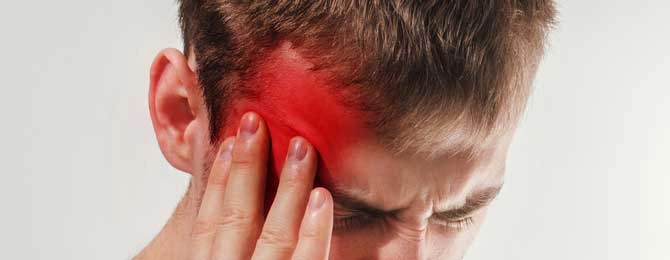Heavier Headaches: Understanding Migraine Symptoms and How to Counter Them
If an average person who doesn’t suffer from migraine headaches knew just how tough actual migraine sufferers have it, they’d never complain about having a ‘bad’ headache again. Those who know what a migraine feels like will understanding the skull-splitting pain that comes along with them, and then you have to take into consideration that the migraines keep occurring – over and over again. Indeed, it’s an unenviable situation for those people, and apparently there’s some 36 million in America. That’s roughly 12% of the population, so our discussion of migraine headaches and migraine symptoms here is definitely warranted.
Before getting into that, however, it’s necessary to make one important distinction; while migraines are classified as a type of headache, they’re very different from headaches in the nature of them and how people experience them. Standard headaches will vary a lot with how long they last, how severe they are, and their causes. Further, the way you experience them can be different from one to the next. One of the most defining characteristics of migraine headaches is that they occur in recognizable patterns.
Migraine sufferers can often determine that one is ‘on its way’ with these patterns. While those onset signs are part of migraine symptoms, preventing them or finding any other type of migraine treatment that’s effective and doable is definitely challenging.
Types of Migraines
We could talk about the different types of headaches -and migraines being one of them – but given the subject matter it’s likely better to discuss types of migraines rather than types of headaches. So let’s do that. Many people will just assume that one migraine headache is the same as the next, but that’s not the case.
Here are the different types of migraine headaches, with a brief listing of the nature and particulars of each:
Migraine with Aura This type of migraine involves the individual having disturbances in their sensory perceptions that forecast a migraine coming. The name seems to suggest that it involves seeing lights, and while that’s true it’s not the only type of abnormal perception people can have a part of aura. The effects of an aura can include:
- Seeing strange, sparkling and / or flashing lights that are superimposed on top of your vision
- Having confusing thoughts or experiences
- Seeing zig-zagging lines in the visual field
- ‘pins and needles’ sensations in arm or leg
- Difficulty with speech
- Unpleasant smells
Migraine without Aura: This is the most common of the type of migraines, and involves no sensory disturbance leading up to the attack like there is with a migraine with aura.
Chronic migraine: Any migraine that occurs on more than 15 days of any month.
Menstrual migraine: Migraine headaches that occur in connection to a woman’s menstrual cycle.
Hemiplegic migraine: One that causes weakness on a single side of the body, for a temporary period.
Abdominal migraine: A migraine that occurs regularly and is related to irregular abdominal and intestinal (gut) function. Mostly seen in children under 14.
Migraine with brainstem aura: A very rare type of migraine that can involve developing severe neurological symptoms.
Migraine Symptoms
The first thing that needs to be said about migraine symptoms is that they don’t always come AFTER the onset of an attack like is the case with most other conditions. They can come before the headache, during it, or after it, and this makes finding a 1-size-fits-all effective migraine treatment very challenging
There are typical migraine symptoms seen in most of the different types of migraine attacks, and what causes migraines hasn’t been determined conclusively. The belief is that they stem from abnormal activity in the brain, and that some people with certain genetic predispositions are more prone to having triggers promote those abnormal activities:
Hormonal changes, emotional triggers, physical causes, medication use, diet choices, and environmental factors are all the different triggers believed to be behind what causes migraines, but again only if the individual has the genetics to accommodate them in this negative way.
Typical migraine symptoms:
- Moderate to severe pain stemming most pronouncedly from one side of the head most of the time, but sometimes from both sides
- Throbbing, severe pain in the head
- Increased pain when engaged in physical activity or straining to complete a task
- Inability to perform regular activities due to pain
- General illness feeling and / or vomiting
- Increased sensitivity to light and sound
Less common migraine symptoms:
- Sweating
- Stomach ache
- Temperature changes
- Diarrhea
Migraine Treatment and What Helps Migraines
As is the case with most chronic painful conditions, migraines are usually treated with migraine medicine. OTC (over the counter – no prescription needed) medications that are commonly used are naproxen, ibuprofen, and acetaminophen. Aspirin with caffeine incorporated into the tablet is also a popular choice that’s reported to be very effective.
Some people with severe migraine symptoms may need a prescription drug for their treating a migraine. Metoclopramide is a good choice if nausea and vomiting are the issue, while serotonin antagonists like sumatriptan may be good for migraines that come with overbearingly severe pain. For some people their physician will prescribe SSRI tricyclic antidepressant medications to counter migraine symptoms.
Some natural supplements can be helpful too. These include Coenzyme Q10, magnesium citrate, vitamin B-12 supplements, and riboflavin. Herbal extracts like feverfew have become popular with some migraine sufferers.
Lifestyle changes can make a difference too. Getting sufficient and quality sleep, reducing stress influences, drinking plenty of water, avoiding certain foods (ones that contain gluten for many people), and getting regular vigorous exercise are worth trying to see if they make a difference for you.
Lastly, surgery to stop migraine attacks is actually a possibility too. For some patients, doctors will administer a botox injection to the extracranial sensory branches of the trigeminal and cervical spinal nerves. These are nerves that are linked to migraine attacks. Migraine injections are likely a long way away from being a migraine treatment that’s available to the masses though.




